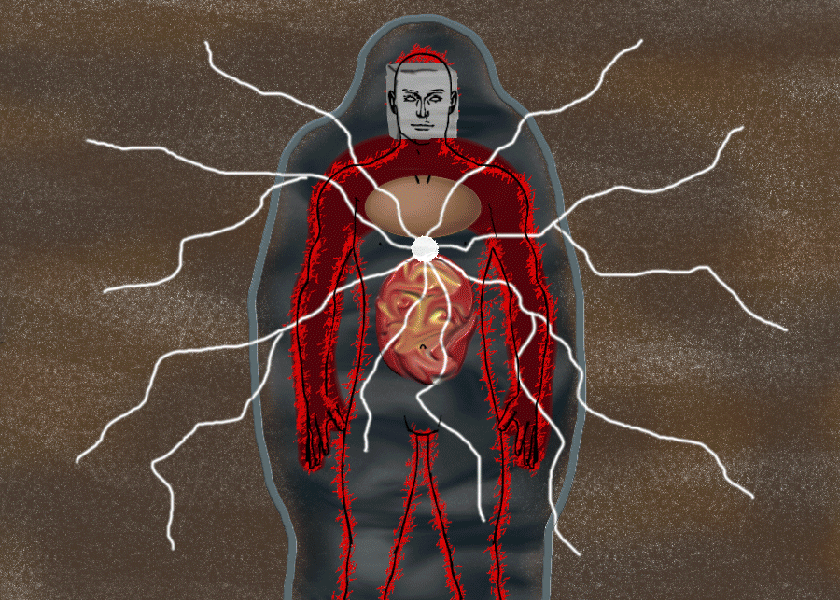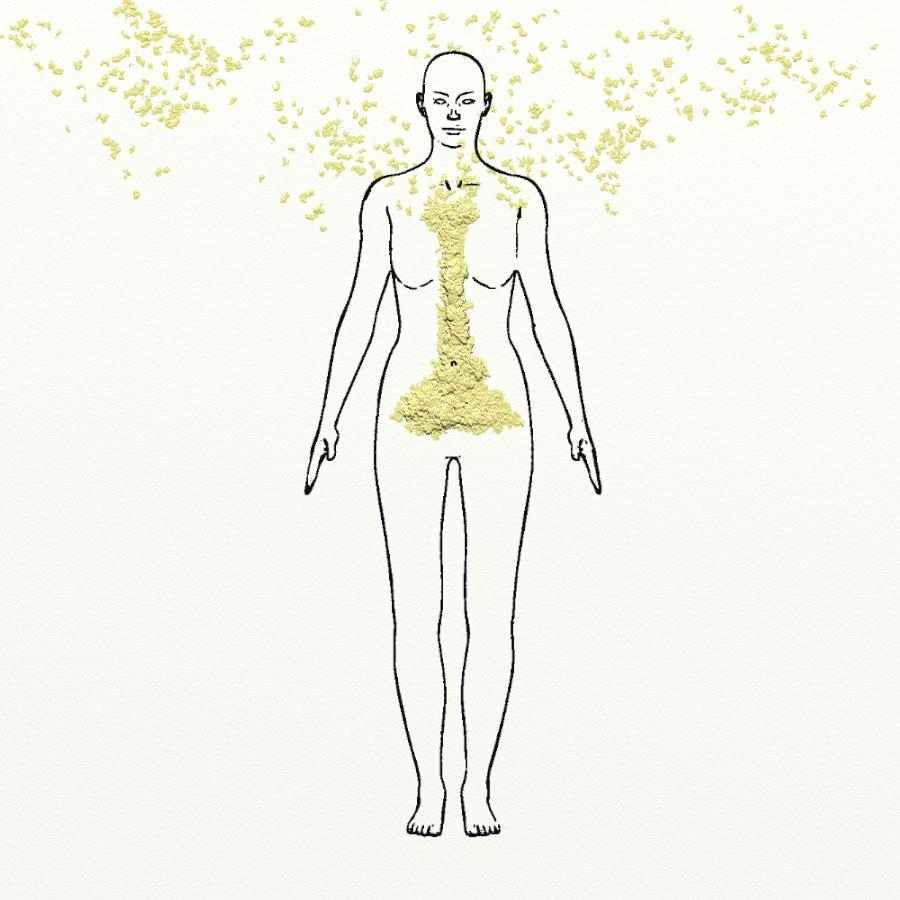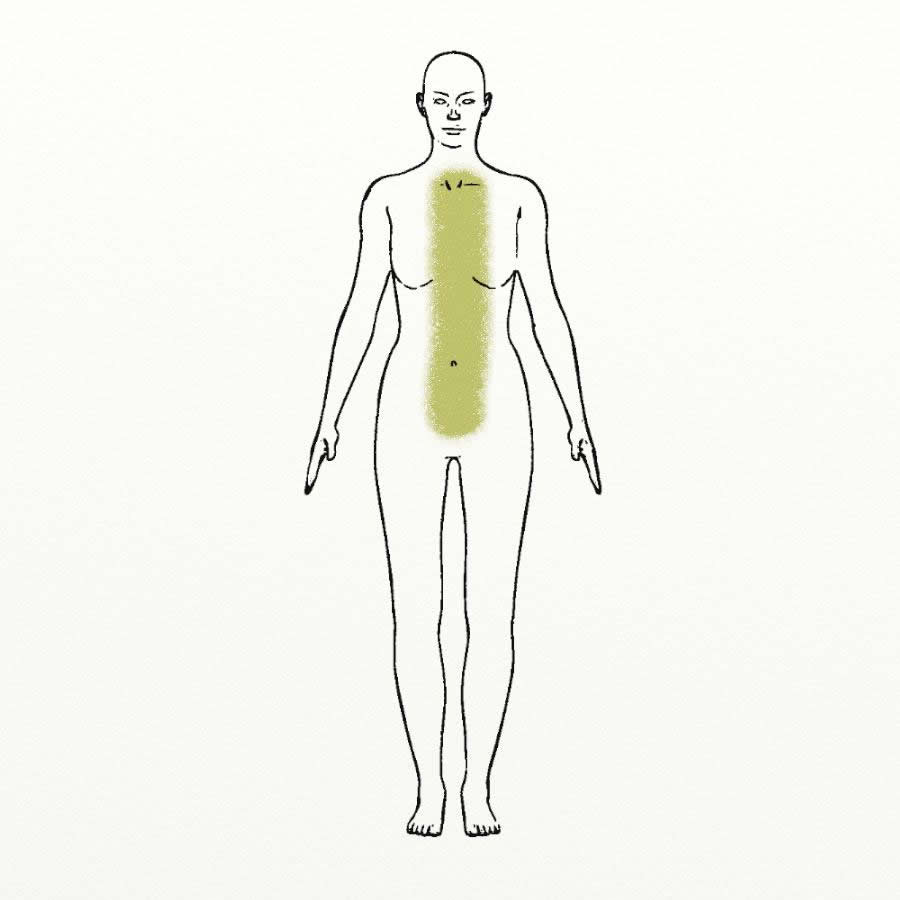Frontiers of Psychotopology
Introducing a New Science of Being
First time here? Here’s an overview of everything on the ‘stack.
The science of psychotopology began with a curiosity about how we commonly speak about the experience of feeling. Often when we describe how we feel or how we imagine someone else feels, we use metaphors of materiality. We talk about having a heavy or light heart, feeling shattered, walking on air, carrying a heavy burden, being all wound up, acting hard headed, glowing with pride, being frozen in fear, seething with anger, radiating confidence, bursting with happiness, an electricity of attraction, or some kind of swirling or leaping or collapsing inside of ourselves.
Why is that? What if these turns of phrase are not just poetic metaphors? What if they point to something more real?
Out of this curiosity, I brought my attention to a familiar feeling of depression that had a definite weight to it. Its dominant sensation was that of a gravity pulling downward through my chest. I wondered what would happen if I deliberately reversed the gravity, and on a lark, I flipped it to lift upward instead.
Instantly, my mood shifted. Instead of depressed, I felt downright cheerful, which shocked the hell out of me. Over the previous 15 years, I had searched for relief from bipolar disorder by working through the baggage of my childhood, healing old traumas, reconfiguring old beliefs, on and on and on. In this moment, I experienced a relief that came easily with no such effort. How did this happen? What did it mean?
Virtual Materiality: The Proto-Language of Being
I decided to explore further. Over the next few weeks, I developed a series of questions to invite attention to the inner experience of specific feeling states, comparing the actual feeling experience to elements of materiality including location, substance, temperature, color, movement, force and sound. I tested these questions on myself and a few others.
The results were clear and strong. We had no trouble at all answering these questions. Not only that, but identifying these properties of materiality brought each feeling state into much more heightened awareness, with an unprecedented, vivid tangibility. It was like switching the lights on in a dark basement. We were blown away by the revelatory impact — seeing things so clearly which had previously been only a nebulous, indecipherable mess.
On reflection, the power of this method makes perfect sense. Every living one of us inhabits a body. This body inhabits a world, and both body and world are experienced as stuff — solids, liquids, gases, light and energy.
This body-in-the-world stuff carries properties, each with specific experiential qualities that enable us to distinguish one patch of stuff from another in order to navigate the requirements of staying alive:
Location, size and shape of the patch occupied by one type of stuff, inside of which it exists, outside of which it does not.
Qualities of substance, including solid, liquid, gas, light, energy, along infinite spectrums of hardness, density, weight, texture, etc.
Temperature including relative value and distribution within the substance.
Color, as well as transparency, luminosity, and more.
Movement, force, and pressure exhibited by this patch of stuff relative to the stuff (or the absence of stuff) that surrounds it.
Sound generated by or with the stuff.
This stuff of our body and our world constitutes the primary mediator of lived experience. We could call it a proto-language of being. We are all fluent in this proto-language, experiencing it deep within our flesh, our bones, and the energy that infuses them. We navigate this world of materiality moment to moment, from long before we are born until the moment when life departs. What better raw material for consciousness to use for constructing the foundation of our inner experience?
Transforming the Nebulous into the Tangible Through Precise Observation
Applying the questions about virtual materiality to our experience of specific feeling states amplifies our capacity to perceive our own selves. We’re observing something that feels tangibly real, and this precise observation opens the door to much more profound self-understanding. Here is how my client Louise described the experience.
First, I acknowledged and embraced this Crumbling, and let go of all my reasons for its existence. It made me excruciatingly uncomfortable. It is a strange thing to really feel an emotion. I always tend to cover them with specific thoughts or turn away and find distraction. But now I had to just sit and feel it.
Guided by Joe’s questions, I closed my eyes to try to see if the feeling had a shape and a form and a color. It did. A loosely collected set of yellow particles that collapsed and crumbled within me. “Yellow?” I thought, “Wouldn’t gray or blue or black be more appropriate for this sinking feeling?” I sat with it. They were yellow. I shrugged. They really couldn’t and wouldn’t become any other color.
As I sat with the feeling I felt the particles collapsing. As they collapsed I felt the familiar sinking feeling but this time it was different. The feeling existed on its own without a specific incident to attach it to. All I had was the feeling deep inside me. My core felt very heavy and I was intensely aware of the weight of gravity pulling me down into the chair.
I emerged from the emotion feeling disoriented and shaky. I felt deflated and sad but I also felt a deep sense of understanding for myself. I drew the image. Seeing the image allowed me to objectify the emotion. It no longer felt frightening and elusive and overwhelming. Giving the feeling form moved it from something vague to something tangible.
Once I identified the feeling, its words came through with striking clarity. “You shouldn’t have put yourself out there, you should have kept it all closer.” These were my words coming from a level of my conscious mind I had never heard before. Through life, being rather um…sensitive… I had constructed an instant awareness of the slightest shift in social acceptance, and I protected myself from further hurt by closing up, pulling back, surrounding my self with the protective wall.
This may have protected me from a deeper feeling of social rejection, but it wasn’t helping my social life, or my life as a freelance writer. It just wasn’t helping anymore.
Turn the light on in this dark basement of feeling, and you quickly make some surprising observations.
Feeling tangibly occupies space, and this space often extends beyond the body.
The space of a specific feeling carries distinct, virtual material properties that give the feeling experience its unique qualities.
Ordinary names for feeling states obscure the actual experience. What’s there in actual experience is far richer than can be packed into a nomenclature, no matter how granular.
Distinct feeling spaces coexist in dynamic groups. Once you bring one feeling state into precision awareness, others come quickly into view.
All experience includes the feeling dimension. Even the most emotionally neutral categories of experience are grounded in feeling.
Feeling spaces interact. And interestingly, thoughts seem to function as channels of interaction connecting one space to the next. Endless complexity of thought seems grounded in a more stable configuration of feeling spaces.
These are unexpected results. What exactly is revealing itself here? Fortunately, the method I had created gave me the power to do more than simply observe.
The Power of the Shift
My first experiment of shifting the gravity of my depression from downward to upward indicated right away that accessing this proto-language of virtual materiality confers massive power. Once you map the properties of a feeling state, you can directly interact with those properties to change them. You can make the temperature warmer or cooler, for example, or the substance harder or softer. When you do, the actual experience of the feeling changes instantly. Not only that, the thoughts associated with that feeling state also change in ways congruent with the shift in feeling. Instantly.
Here’s what Louise, quoted above had to say about shifting her experience of Crumbling.
After identifying this first, intense feeling state, we shifted it. I began by looking at the color. What color did it most want to be? Yellow. The color stayed the same. I was disappointed. I tried to make it a new color but it stayed stubbornly yellow.
I moved on. Particles swirling and sinking moved into a solid pillar in my center. I felt it. It felt warm. Like the warmth of stone in the sun. It felt solid under my hand, but like an energy that takes the form of a solid, with a pulse all the way through it, heartbeat-speed, with a warm, humming sound like a beehive or something. It seemed like the pulse would change and adjust depending on circumstances. It felt good.
I was surprised at the tenacious clarity of each part of the feeling. I tried making it cooler but it didn’t feel right. The temperature was very specific. Warmer than body temperature but not hot. The color, too. I tried making it lighter, then darker. It would shift reluctantly, and immediately I would start to lose track of the good feeling. I brought it back to the state where it felt best. I tried changing the shape. It wouldn’t budge.
As I allowed everything to return to its perfect state, a feeling of strength, calm and confidence flooded over me. It felt right.
A few thoughts/beliefs that came with this new feeling: A sense of forward movement, a reaching out into full experience and true understanding and awareness, fully awake, aware and receptive without fear of threat. “It’s OK,” a safe state of just being. I called it Core Strength.
Overall, the experience of shifting Crumbling to Core Strength left me stunned. It moved so quickly, and the feeling of relief and lightness was sweeping and overwhelming.
This power to interact with the feeling state by deliberately changing the virtual material properties of which it is made enables us not only to transform distress into resourcefulness, but to truly experiment. What do we discover through these transformations? A lot.
For example, it becomes clear that consciousness has a modular structure. To provide a glimpse into what’s coming, let me share this illustration of my client’s flowchart illustrating the relationships between Crumbling and the other states she mapped related to it. Hang tight for future posts that will lay out a modular topology in much more detail.
In short, we are complex! And working our way through the transformation of such networks yields profound shifts in life-long patterns. Here is how Louise described her experience a few months after completing her work with me:
“As the weeks pass I realize increasingly that many of the ways I used to feel or react are simply gone. Once I went through the whole process, I felt rather raw and unformed.
“Now, slowly I am beginning to recreate myself as I always knew I could be, confident, happy, focused and self-aware without being self-conscious. As I find more energy to take care of my emotional self, I have more energy for other people. I have more energy to take care of my physical body, my career, my finances and my surroundings.
“I feel like I have been freed from a heavy burden that I carried for years though I had only limited awareness of it. It’s not so much that I am a different person now, but rather I am the same person without all the issues.”
More of What’s Coming
In the early days of my investigations, I became convinced that I needed to approach this from a fresh direction. In service to this new science, I married myself to the raw data of direct experience — my own and that of hundreds of others over the years — as my primary teacher and guide.
It has taken me 30 years to fully outline this new territory, and the time has come to share the results as widely as I can. Over the coming months and years, I will present both the method, which I call fieldwork, and the science of psychotopology that emerges from it. My intention is to support you in using these tools and discoveries for:
Restoring your own natural functioning and freeing yourself of persistent mental and emotional issues.
Assisting others in doing the same.
Connecting this work with other, related methodologies so that we can begin to weave a richer, stronger tapestry to serve a wider diversity of deserving people.
Working together to establish psychotopology as a legitimate, published science with status in the academy by recreating its discoveries, one step at a time.
Expanding current research in psychology, neuroscience and other fields by applying this disciplined method for observing actual, inner experience with rigor and precision.
Conducting cross-disciplinary investigations into the nature of the reality we inhabit, including consciousness as a core feature of this reality.
Achieving new insights into the challenges of our society and improving everything from practices of parenting and education to our broader societal systems.
Is this ambitious? Yes. Will it happen overnight? No — I’m guessing it will take a generation or two to fully develop the science and harvest its benefits. But you’ll be able to get started with the first two points very soon as I begin to publish the fieldwork manual. And I hope that as you confirm for yourself the significance of this new science, you will choose to step in and bring your own expertise and passion to its further development and application.
Subscribe?
If this intrigues you and you want to learn more, I recommend you subscribe. There’s a lot to look forward to, and subscribing will keep you in the loop.
If you would like to be more involved than just reading and commenting, consider a paid subscription at $9/month or $90/year (with the option to sign up for the Esteemed Supporter level with a higher annual contribution). For paid subscribers, I intend to host a more active community where we will have periodic live calls and chats, providing richer opportunities to connect.
A bonus for paid subscribers in these early days: In the live calls, you will have an opportunity to experience and learn about fieldwork before the full series of posts is published here, so you’ll get a jump on things. Plus, becoming one of the first subscribers will give you this special access in a super-small group.
I also invite you to reach out to me by email if you have bigger questions: put the “@” between “frontiers” and “psychotopology.com” in the Frontiers of Psychotopology URL.
Reflections
Influence how I move forward by adding your reflections in the comments below.
How does this piece land for you?
What in you feels like it is being spoken to in this post?
What questions are you left with? What are you most curious about?
What feedback would you like to offer me, in service to my being able to share this new work with you and the world?
What feedback could you offer toward improving my writing of this post?
Comments are open to all, and I do hope you will consider also subscribing so we can stay in the loop with one another as this evolves.
Thank you.
Honestly, I don’t know what to expect as I begin this project. But as I lean into the possibility that you may find your way here (whoever you are!) and that we may discover places for generative connection, I find myself feeling curious about you and excited about the possibilities for what we have to offer one another. I am hoping that we have a long way to go together, and many moments to treasure.
Thank you for being here, thank you for reading, and thank you for sharing your thoughts in the comments below. I look forward to meeting you soon.
One last note: I’d love for you to thoughtfully spread the word about Frontiers of Psychotopology. For example, reach out to someone you think would appreciate this, and tell them why. Alternatively, here on Substack, feel free to share with your beloved subscribers.
I believe this will help us steadily grow a vibrant and healthy community here. Thank you!






Immediate recognition here. You describe roughly the right hemispheric way of being in the world, being part of the place. Your six observations ring very true to me. This stood out: Endless complexity of thought seems grounded in a more stable configuration of feeling spaces. I don't think it is proto in the sense of primitive though. To me it is the embracing, larger communication that permeates the place.
The word precise leaps at me as too easily translated as a form of focus. I feel the opposite is happening; a relaxing of focus that allows to come closer, allows more intimacy through large surface openness, not narrow, precise attention. In practice, precision is about proximation, not the theory of exactness. Hope this doesn't sound as a total paradox. Words are not suited for this.....
One more thing, I wondered if you have experimented with people drawing, painting, expressing their feeling in other ways than words? Colour, texture, sound, size, shape, movement....
WOW this is so fascinating, and also exciting. I can’t wait to hear more, especially about the process of bypassing the swamp of stories and judgments and connecting with the raw feeling hidden inside them.
I don’t have any suggestions for improvements on your writing–your ideas were clear, straightforward, and well explained, and my brain was happy to read them.